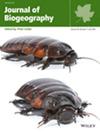Integrating Soil Properties Into Species Distribution Models Enhances Predictive Accuracy for Terricolous Macrofungi
Abstract
Aim
This study aims to (1) test whether mapped soil properties can improve the performance of species distribution models (SDMs) for 162 terricolous macrofungi at a regional level, (2) identify relevant soil predictors for macrofungal regional distribution and (3) quantify the relative importance of soil properties as compared to climate and topography in explaining macrofungal regional distribution.
Location
The forested area (~ 12,000 km2) in Switzerland.
Taxon
Terricolous Macrofungi.
Methods
We collected occurrences (presence-only) for 162 species of terricolous macrofungi, including 111 ectomycorrhizal and 51 saprotrophic species, from the SwissFungi database. We used soil property maps, generated through digital soil mapping at a 25 m resolution, to enhance macrofungal SDMs. For each species, we selected two climate, two topography and two soil predictors by an automated variable selection procedure. We built SDMs with randomised soil properties for performance comparison. We quantified the importance of soil properties based on permutation and variance partitioning. Finally, we projected the SDMs for three representative species at 25 m resolution with and without soil properties to assess the role of soil properties in shaping their biogeographical distributions.
Results
Soil properties significantly improved the median performance of the SDMs across the 162 species. Ectomycorrhizal fungi showed a significantly greater improvement than saprotrophic fungi. On average, our models were able to explain two-thirds of the variance in macrofungal distribution, of which 11% could be independently explained by soil properties. Air temperature and topographic slope were identified as additional important factors controlling macrofungal distribution. Evident changes in geographical distribution were observed for the three representative species after adding soil properties.
Main Conclusions
High-resolution digital soil maps significantly improve the predictive accuracy of macrofungal regional distribution. They should therefore be taken into account when modelling the geographical distribution of macrofungi.

 求助内容:
求助内容: 应助结果提醒方式:
应助结果提醒方式:


